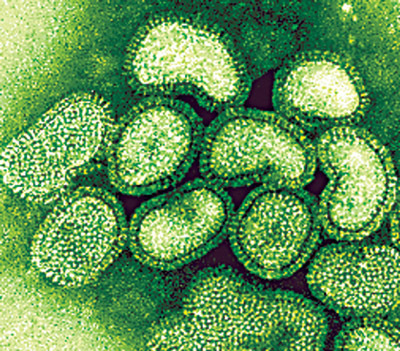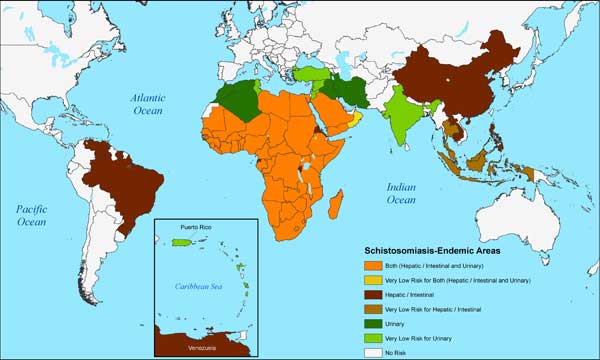The order does not denote importance
| Africa | · African Sleeping Sickness · Malaria · Calabar Swellings · Schistosomiasis |
| Europe | · Tapeworm · Liver Fluke |
| Asia | · Malaria · Dengue Fever · Japanese Encephaitis · Typhoid Fever · Round worm · Chinese Liver Fluke |
| North America | · Giardia · Trichinella Spiralis “round worms” · Tape worms |
| South America | · Malaria · Yellow Fever · Dengue Fever · Chagas Disease |
| Australia | · Yellow Fever · Tapeworms “beef tapeworm” |
Infectious Disease Around the Globe
The order does not denote importance
| Africa | · HIV/AIDS · Trachoma · Leprosy |
| Europe | · AIDS · Tuberculosis · Influenza |
| Asia | · Trachoma · Avian Flu · Tuberculosis |
| North America | · Chlamydia · Gonorrhea · Salmonellosis · Syphilis · AIDS · Influenza |
| South America | · Malaria · Tuberculosis · Chagas disease |
| Australia | · Influenza · Avian Flu |
Infectious Disease of Choice
My target disease that I will provide information on will be the Swine Flu. It gained attention among the media recently as a potentially deadly disease, though it never quite became as prolific as seasonal flu.

As the map shows, the Swine flu did affect every continent but its numbers when compared to seasonal flu were not nearly as wide spread nor deadly.
Life Cycle of Swine Flu

Once the virus enters the host human body (often through contact with an infected person), it enters cells and begins to replicate its DNA making more virus cells who can then enter more host cells to create more viruses. This continues for about 7 days before symptoms will begin to arise. these symptoms are very similar to seasonal flu including; body aches, fever, sore throat, headache, chills, and sometimes vomiting and diarrhea. Because it is so similar, it usually requires a differential diagnosis from a physician. Fatalities are more likely in young children and elderly; most healthy people can get better with treatment and rest within about one week.
Parasite of Choice
The parasite I will be covering is Schistosomiasis. This disease typically infects people of less developed countries.

Life Cycle of Schistosomiasis

Becoming infected with this worm typically occurs through contact or ingestion of contaminated water. When it comes in contact with skin it Burroughs in and takes about three days to reach blood vessels where it then migrates through the body. This takes about 7 days until it reaches the Liver. Once here, the worm matures; this takes about 45 days. One type of the worm migrates to the bladder and the other to the large and small intestine. These worms can live in the human body anywhere from 5 to 20 years and will constantly lay eggs!! It is the eggs not the adults that can cause the damage. Symptoms of Schistosomiasis are; fever, chills, lymph node enlargement, liver and spleen enlargement, abdominal pain and diarrhea, and possible frequent urination. This can lead to Kidney failure, bladder obstruction, or colon inflammation.
the link bellow leads to a great video about the life cycle and spread of Schistosomiasis.
Shistosmiasis
No comments:
Post a Comment